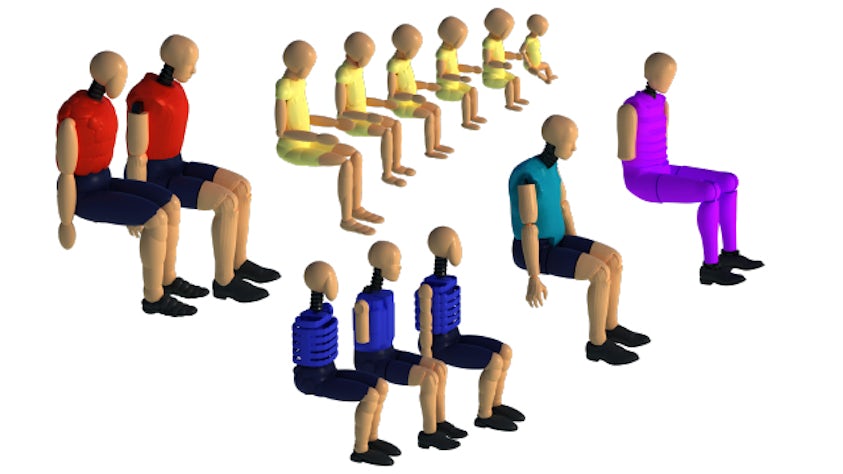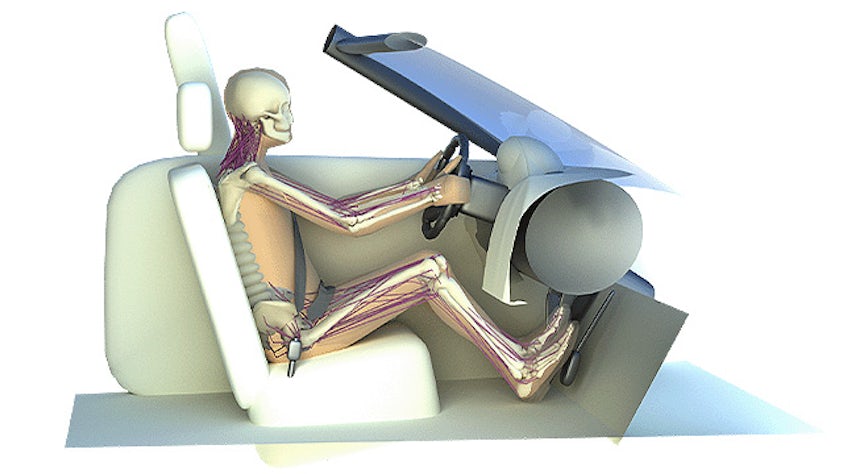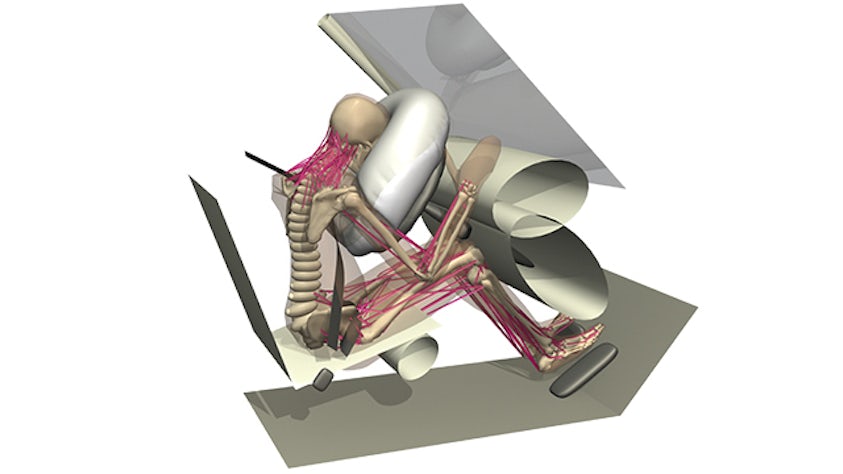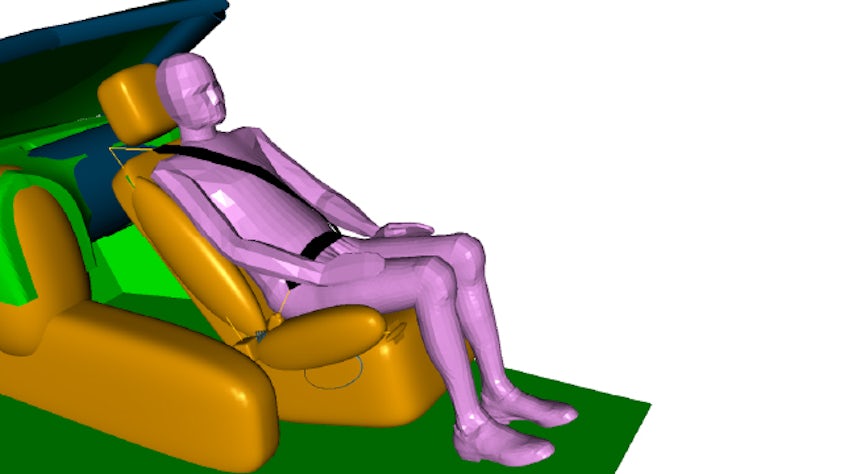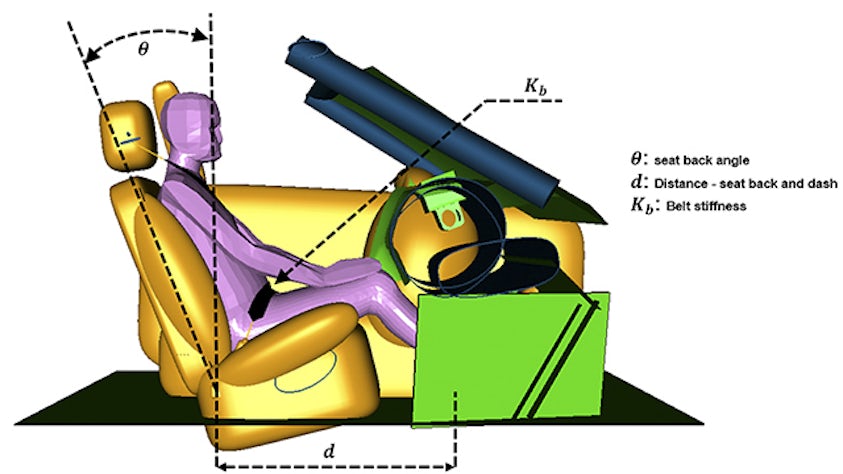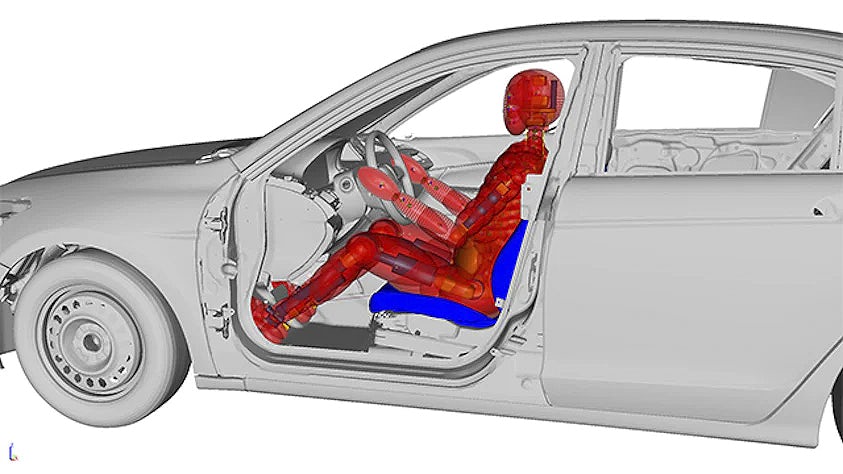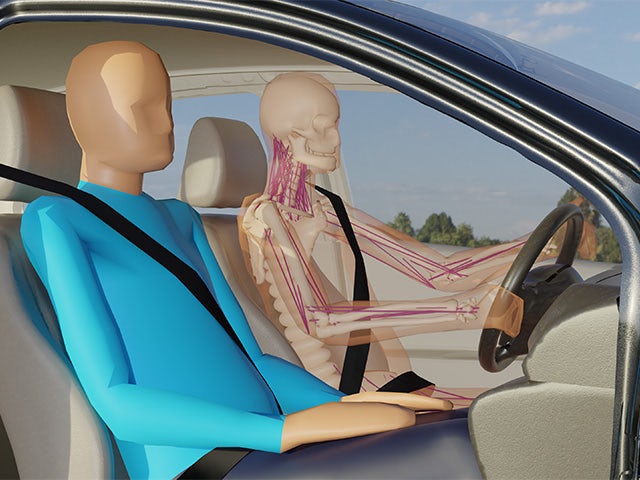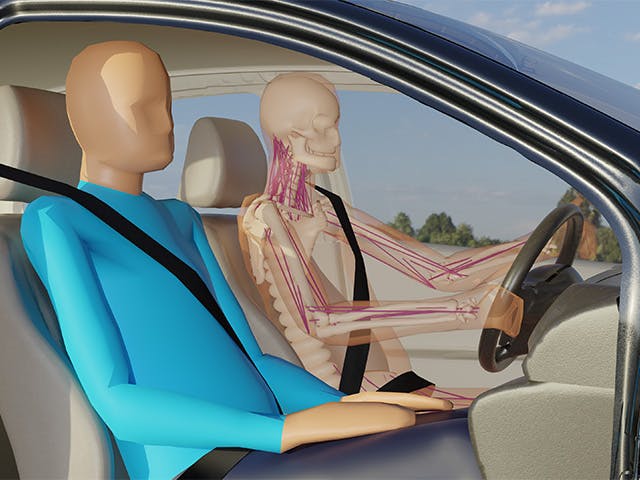La sicurezza degli occupanti e dei pedoni sono aspetti critici della progettazione che determinano se un veicolo può essere omologato o meno. Per questo motivo, prima che un veicolo possa essere immesso sul mercato, è necessario condurre test approfonditi sui prototipi. Tuttavia, questa tipologia di test è abbastanza costosa e può causare ritardi significativi, soprattutto quando vengono rilevati problemi. Per questo motivo, i produttori di veicoli risparmiano tempo e costi nella prototipazione, anticipando all’inizio le fasi di ricerca e analisi tramite la simulazione.
Simcenter offre soluzioni software per la simulazione della sicurezza degli occupanti e dei pedoni. Il software è dotato di una vasta gamma di modelli multi-corpo umani e fittizi che vengono utilizzati per analizzare vari scenari critici per la sicurezza. Grazie al vantaggio della velocità di calcolo offerto dalla dinamica multi-corpo rispetto all'analisi degli elementi finiti (FEA), gli ingegneri possono progettare sistemi di sicurezza ottimizzando i tempi.
Simcenter Active Human
Ottieni una previsione accurata della risposta del corpo umano durante le manovre del veicolo.

